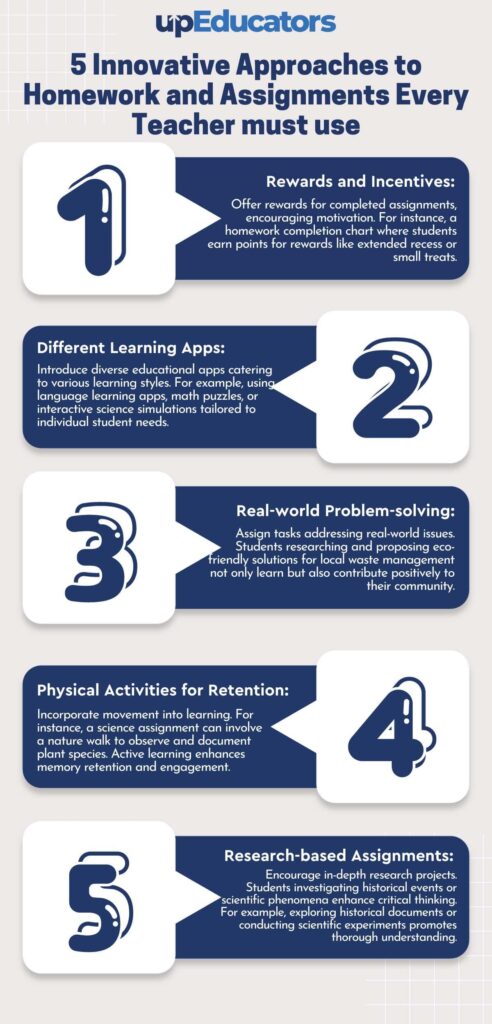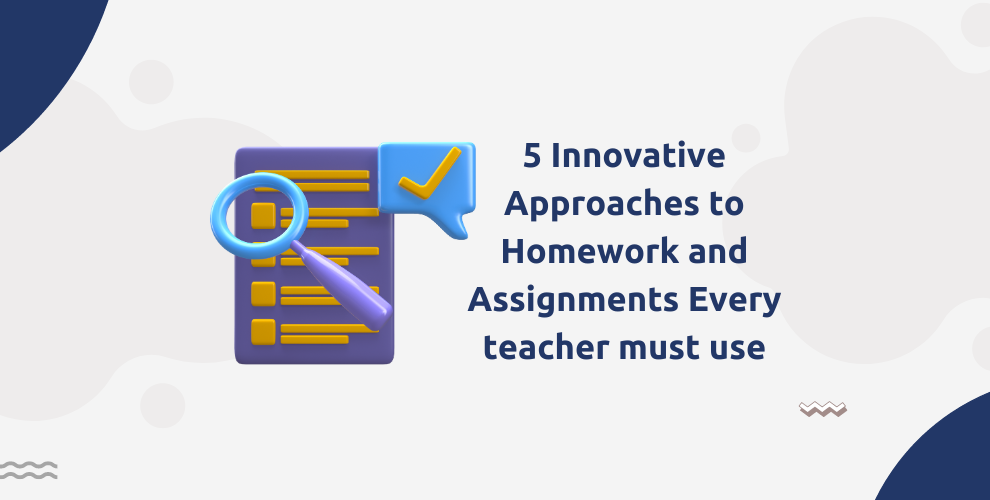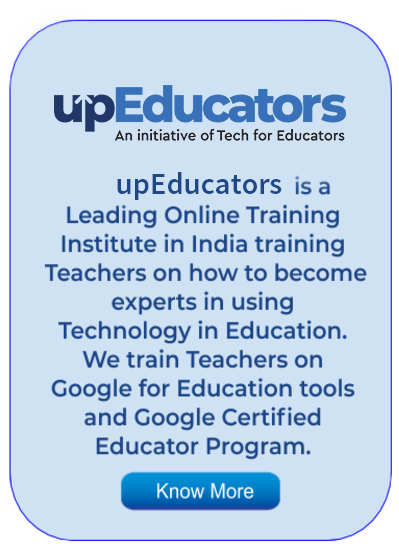Ms Nidhi, a dedicated teacher, noticed her students’ dwindling engagement with homework assignments. Determined to make a positive change, she adopted innovative strategies. She introduced choice boards, allowing students to select assignments aligned with their interests and learning styles. Collaborative projects and real-world applications were integrated to make the tasks more meaningful.
Ms Nidhi also embraced technology, incorporating interactive online platforms and gamified activities. Students were excited by the newfound autonomy and variety in their homework. They eagerly completed assignments, showcasing creativity and deeper understanding. As a result, not only did their grades improve, but their enthusiasm for learning flourished, creating a classroom culture of active participation and academic growth.

If all students had to unanimously make a wish, they would collectively wish for homework-free learning. But homework is a crucial part of learning as it enables better retention of information and helps students in autonomous learning.
When students do not complete their assignments and show a lack of interest in homework, it becomes a teacher’s job to make those assignments interesting and engaging for students. In this blog, we discuss five strategies that every teacher must use to make homework and assignments interesting for students. So let’s dive straight into these approaches to homework.
Use Rewards and Incentives
By incorporating rewards, teachers can create a positive reinforcement system that encourages students to complete their work diligently. However, it is important to strike a balance.
While rewards can provide initial motivation, it is crucial to foster intrinsic motivation in students. Teachers should aim to cultivate a genuine love for learning and a sense of accomplishment derived from the task itself, rather than relying solely on external rewards.
Select rewards that are meaningful and aligned with students’ interests and preferences. This could include small tokens, extra privileges, recognition, or opportunities to showcase their work.
Try Different Learning Apps
Incorporating a variety of learning apps like Kahoot, Quizlet, and Nearpod can transform homework into an exciting and engaging experience for students. These apps offer interactive quizzes, games, flashcards, and multimedia presentations that capture students’ attention and encourage active participation. By providing personalised learning opportunities, collaboration features, and instant feedback, these apps make homework more interactive and student-centred.
Furthermore, the data and progress tracking capabilities of these apps enable teachers to monitor individual performance and tailor future assignments accordingly. By leveraging these diverse learning apps, teachers can create a dynamic and captivating homework environment that fosters student interest, enhances learning outcomes, and promotes a love for learning.
Give Assignments that solve real-world problems
Teachers can make homework and assignments more captivating by incorporating tasks that tackle real-world problems. By presenting students with assignments that connect academic concepts to practical situations, teachers can enhance student engagement and foster meaningful learning.
Assignments could involve proposing solutions to environmental challenges, analyzing societal issues, or designing innovative solutions to address community needs. By immersing students in authentic problem-solving experiences, they develop critical thinking, creativity, and problem-solving skills while understanding the relevance of their education. This approach not only makes homework more interesting but also equips students with the abilities necessary to make a positive impact in the real world.
Use physical activities for retention
By incorporating physical activities into homework and assignments, teachers can enhance retention and make learning more interesting for students. Physical activities engage students in active learning, allowing them to connect concepts with movement and sensory experiences.
Whether it’s through hands-on experiments, outdoor exploration, or kinesthetic exercises, these activities cater to different learning styles, improve focus, and promote better understanding and memory retention. The inclusion of physical activities adds variety and novelty to homework, preventing monotony and increasing student engagement. Moreover, it contributes to students’ overall well-being by promoting an active lifestyle and supporting their physical and mental health.
Make them research more
Teachers can enhance the appeal of homework and assignments by encouraging students to engage in research. By assigning tasks that require independent investigation, teachers foster curiosity, critical thinking, and a sense of ownership over the learning process. Students can delve into various resources, such as books, articles, websites, and interviews, to gather information and develop a deeper understanding of the topic.
Research-based assignments provide opportunities for students to explore their interests, expand their knowledge, and develop essential skills like information literacy and analysis. Moreover, presenting their findings in creative ways, such as through presentations or written reports, adds an element of personal expression and makes the homework experience more engaging and meaningful.
Incorporating innovative approaches to homework and assignments can revolutionize the learning experience for students. By leveraging strategies such as real-world problem-solving, the use of learning apps, physical activities, research-based tasks, and the integration of choice and creativity, teachers can make homework more interesting, engaging, and impactful. These approaches not only enhance student motivation and retention but also foster critical thinking, collaboration, and the development of essential skills for the 21st century. By embracing these innovative approaches, teachers can create a dynamic and student-centred learning environment that promotes active participation, deep understanding, and a lifelong love for learning.
Author: This article is written by Samiya Rashid for upEducators blog.




